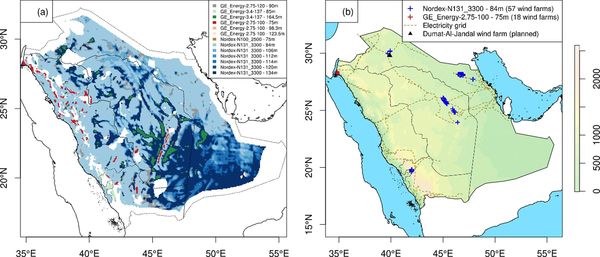
Giani P., Tagle F., Genton M.G., Castruccio C. and Crippa, P. (2020): Closing the gap between wind energy targets and implementation for emerging countries, Applied Energy, 269, 115085, https://doi.org/10.1016/j.apenergy.2020.115085.
Abstract
Policymakers worldwide have set challenging sustainable energy targets to decarbonize their economy. Despite the ambitious pledges, several emerging countries still lack an actual progress towards the envisioned goals, often due to the scarcity of accurate data. Here, we propose a practical methodology for bridging the gap between the wind energy targets and their implementation. We illustrate our new methodology by focusing on Saudi Arabia, which endeavors to play a leading role in the renewable energy sector and pledges to install 16GW of wind capacity by 2030. We propose a blueprint for the optimal wind farms buildout, combining novel high-resolution model simulations, a unique set of observations, land-use restrictions and a thorough cost assessment. The most suitable technological option is selected among multiple turbine models for each potential site. Our findings suggest that Saudi Arabia is well positioned to become a role model for wind energy development within the Middle East, with 26% of the electricity demand that could be met by wind power. The average levelized cost of energy of the proposed buildout is 39 USD MWh−1, which confirms the competitiveness of wind resources in Saudi Arabia. We identify the area close to Gulf of Aqaba as the most cost-effective region for wind harvesting, with turbines characterized by moderate specific rating (350 W m−2) at relatively low hub height (75 m). The modelling framework proposed in this work can be adopted by other countries aiming to start or strengthen their wind energy portfolio.